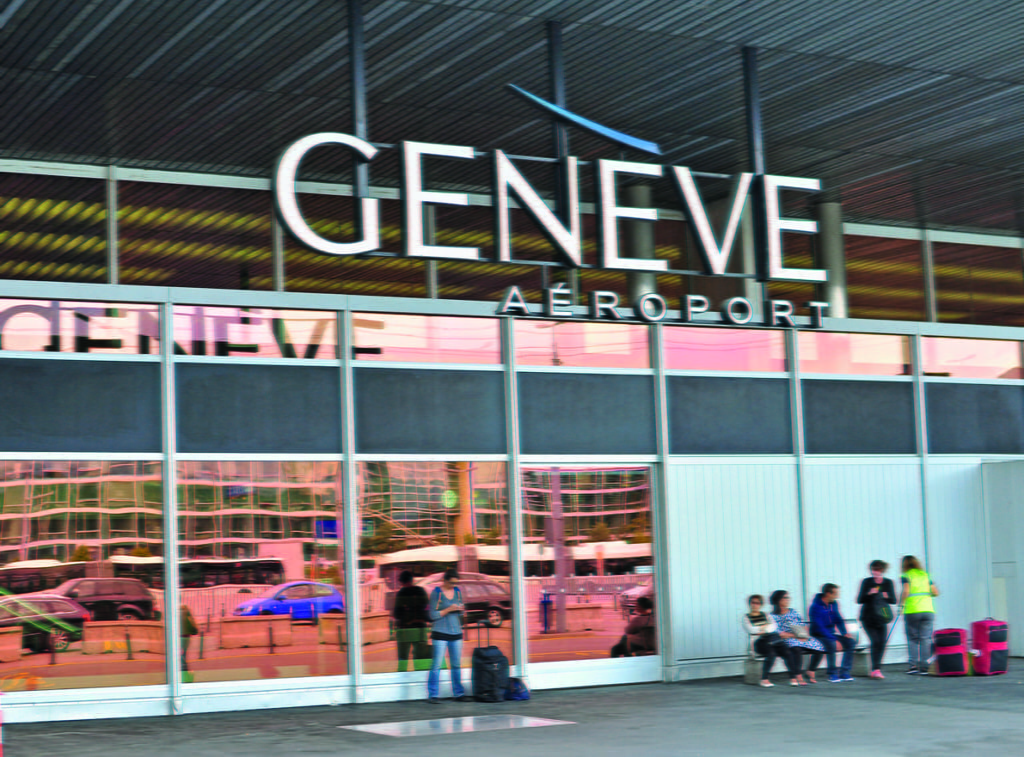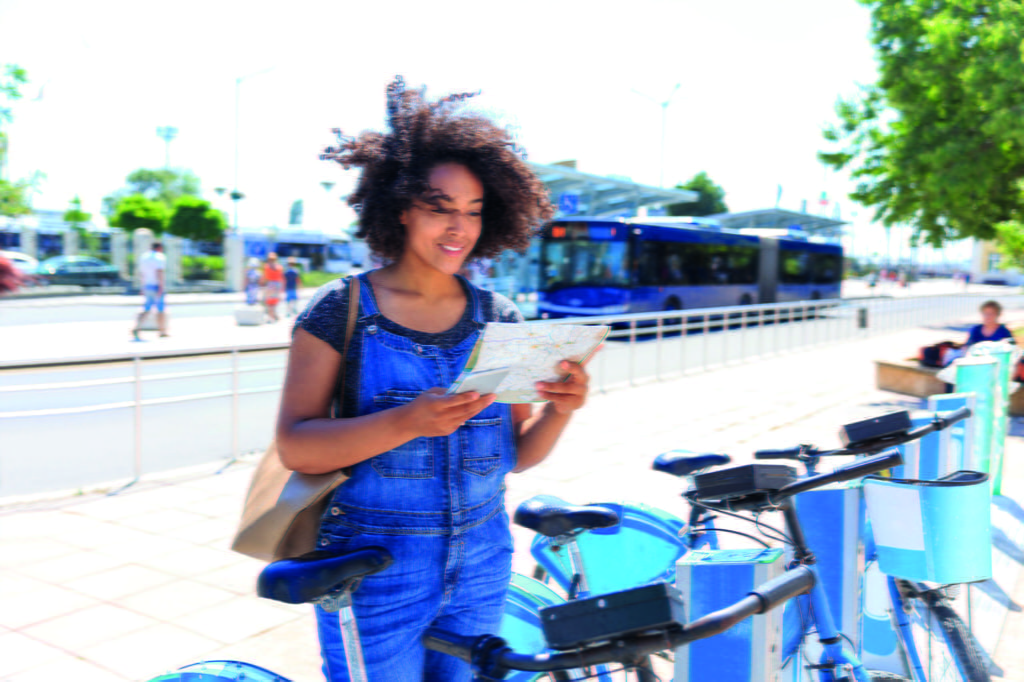Step by step: getting to the airport sustainably
Walking and cycling can certainly be a step forward towards a future of sustainable mobility in and around airports. Marius Nicolescu looks at how one EU project is pushing soft mobility forward
In many cities, active mobility (walking, cycling, etc.) is encouraged and is one of the top options to relieve congestion and improve the citizens’ quality of life. New active mobility options such as e-scooters and e-bikes are increasingly popular. At the same time, more and more people are leaving the car behind to use a bike on their daily commutes. Airport regions want to join in and are looking at ways in which active mobility can improve access to airports.
Indeed, taking a bike or e-scooter, or walking to the airport while dragging a suitcase does not sound like the most efficient method of reaching the terminal. That is if you are in Paris or London. However, there are some major European airports located in the close vicinity of larger dense urban areas. Take Geneva Airport, for example, that is only 4km from the city center or Poznan’s, which is 7km away.
In cases similar to Geneva and Poznan (and we can think of many others, especially smaller airports around the continent), urban density becomes a great asset to facilitateactive mobility. Yet, the main challenge in these areas remains the lack of infrastructure to facilitate active mobility. However, this is changing.
"In Poznan, for example, the regional Sustainable Urban Mobility Plan not only aims at integrating the railway system better but also connecting with the network of bicycle paths"

CHALLENGES – SECURITY, INFRASTRUCTURE, COLLABORATION
Yet, there is much work ahead. In many places, due to security concerns, as well as planning done with only road-based public transport in mind, it is virtually impossible to reach an airport by walking or cycling. As pedestrians are given more space in urban areas, cycle paths are developed at an astonishing rate throughout European cities, reaching the airport by bike is something that active mobility can certainly contribute to.
How do we move forward on this? The challenge at the moment is two-fold. On the one side, developing joint active mobility action plans need coordination among several stakeholders at the airport as well as outside of the airport area. Outside the airport area, depending on the administrative system of the country, the municipalities or other regional coordinating entities play a key role in planning, implementing and coordinating actions which will make active mobility accessible.
On the other hand, the people travelling to the airport, and in this case realistically it will be mostly employees and few passengers, need to know and be informed about the advantages of these new mobility options. A mindset change campaign can come from companies on the airport platform which should encourage and incentivize this.

A SOLUTION FOR EMPLOYEES NOT PROPERLY COVERED BY PUBLIC TRANSPORT
In many cases, airport employees drive to work because of odd working hours not directly correlated with the flights schedules, or because it is more convenient, as public transport mainly connects city centres with airport terminals, and rarely is able to provide a proper catchment areas for employees who may be from the surrounding rural areas. This is where active mobility could be a great solution, and with the advent of soft modes of transport that require less physical effort (like e-scooters and e-bikes), it can prove to be a lifechanger for many people.
It is indeed possible to imagine a future with many more people cycling and walking to airports, with enough collaboration and infrastructure development in those areas. The focus of the LAirA partner airports is getting increasingly into the cyclist mobility development. Without safe and seamless bike road infrastructure cycling cannot flourish. In case the infrastructure exists other auxiliary, but nonetheless, crucial infrastructural elements are necessary. These include proper bike facilities supporting cycling habits at the airport, such as safe storage facilities, changing and shower rooms.
In all cases, the fundamental cyclist road infrastructure depends on the regional and local authorities. However, indirect impact coming from the good relationship between the airport and the other stakeholders could result in strong support for this goal to be achieved.
FYI
Measures LAirA project recommends developing efficient active mobility for airports
Infrastructural development
• Revising existing urban development and master plans in the functional urban areas of the airport to facilitate the accessibility by active mobility modes;
• Enhancing multi-modal transportation with special focus on active mobility modes in regional and urban SUMPs / mobility plans;
• Building main infrastructure corridors (network integration) for cycling and walking in the direction of the airport.
Enhance existing infrastructural pedestrian and cyclist network
Making the commuting easier and better is a key in making soft modes more attractive. This entails:
• Increasing safety along the roads and at crossings;
• Improve the quality of roads thus increasing the comfort of commuting (e.g. barrier-free transport);
• Give priority of equal chances to ‘soft’ modes (waiting time at crossings, shortcuts, etc.), comfort of bicycle and pedestrian roads, crossings (quality, waiting time etc.);
• Allowing the use of active mobility and enhancing active mobility infrastructure on airport grounds.
Improving auxiliary infrastructure at the workplace
In some respects, human-powered modes may be less comfortable when arriving to the workplace due to the required physical effort.
• Creating changing and shower rooms for employees and providing them lockers;
• Establishing safe parking facilities for bicycles and scooters, etc. at a convenient distance from the workplace;
• Making all pedestrian roads barrier-free
Awareness raising activities, promotion of active mobility modes
Promotion of active mobility modes and the lifestyle related to them. These activities play a vital role in getting familiar with the use of these modes, new improvements other than the conventional car use.
• Participation of airports in awareness raising activities of thematic days such as EU Mobility Week, Cycle to work campaign, Earth Day, etc.
• Developing community programmes, site-visits for new soft mobility modes
• Celebrating successes and achievements
• Incentivizing the use of active mobility modes
• Establishing community/corporate bike sharing system
• Creating a mobility smart phone app for employees to track their achievements
• Offering platforms to report best routes to airport
• Gamification (the application of typical elements of game playing (e.g. point scoring, competition with others, rules of play) to other areas of activity, typically encourage engagement with a product or service)
 African tourist using a map and taking a bike on street.
African tourist using a map and taking a bike on street.